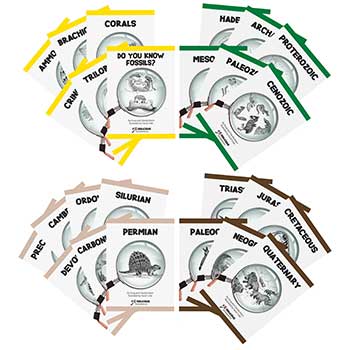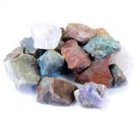Sign up for Lesson Plans, discounts & more!
Selenite
A Common Chemical
Sedimentary Rock

Selenite is a very common chemical sedimentary mineral. It is a sulfate mineral with the chemical formula Calcium Sulfate dihydrate. It is the most common sulfate mineral.
It is an evaporate rock which is one of the three types of chemical sedimentary rocks. The other two are called Carbonate rocks, and Siliceous rocks.
How Does Selenite Form?
Evaporate rocks are formed when bodies of water evaporate leaving behind chemicals that were dissolved in them. Lakes, rivers, oceans, and ground water all have elemental chemicals dissolved in them.
Salt is a well known evaporate. Most table salt comes from Utah. The Great Salt Lake is what is left of a huge inland sea that once covered most of the western United States. It is slowly shrinking in size due to evaporation. As the water evaporates the lake can no longer hold the same amount of salt. The salt precipitates out and is deposited as crystallized halite. The salt found in your kitchen is an example of this evaporate rock.
Selenite forms in this same way from evaporated seawater.
Forms of Selenite Crystals
Selenite is a form of gypsum. There are many crystalline forms of selenite/gypsum.
Sometimes they are grouped together under the name selenite. When gypsum
forms clear and colorless crystals it is called selenite. When it is
opaque with fibrous texture it is called satin spar. Clusters of
tabulate crystals are called desert rose. Single flattened blades pick
up particles of sand and are called hourglass selenite for the distinctive shape created by the sand. Gypsum flowers form from long parallel crystals often resembling rams horns or fishtails. Another common form of this mineral is alabaster, which is often a pastel color and is very popular as a decorative stone for sculptures.
This mineral gets its name from the ancient Greek word for moon or moon stone.
Characteristics of Selenite
Selenite is very soft only a 2 on the Mo’s scale of hardness. That means that all forms of gypsum can be scratched with a fingernail. It is easy to split into thin sheets.
Selenite can be clear as glass.
It is extensively used in making plaster and drywall. It is also used as a fertilizer and soil conditioner. It is actively mined around the world. It is easy to split into thin sheets.
Interesting Selenite Facts
As an evaporite all forms of selenite/gypsum will dissolve in water over time.
It can form large beds hundreds of feet thick and covering many square miles. White Sands New Mexico is one such place.
Selenite can form the largest crystals in the world. In the Naica caves in Chihuahua, Mexico single crystals can reach a length of 33 feet and weigh over 55 tons.
Mineral Properties of Selenite
Mineral Properties of SeleniteChemical formula: Calcium Sulfate dehydrate CaSo42H20
Color(s): colorless, white
Streak: white
Luster: Pearly
Transparency: transparent to translucent
Crystal system: Monoclinic
Specific Gravity: 2.9
Hardness (Mohs): 2
Cleavage: Perfect
Fracture: fibrous
Uses: Plaster, Drywall
Location: Selenite has widespread occurrence. It is found all over the world.
Buy Selenite-gypsum
Rocks-Minerals Home |
Earth's Interior |
What Is A Rock? |
Igneous Rocks Metamorphic Rocks |
Sedimentary Rocks | The Rock Cycle
What Is A Mineral? |
Mineral Identification | Mineral Gallery | Rock Gallery
Lesson Plans | Crossword Puzzels |
Birthstones | Rock Links | Site Map

INTERESTED IN MORE? IF SO, YOU MAY WANT TO CHECK OUT OUR OTHER SITES:
fossilicious.com - Our online fossil and mineral rock shop.
fossils-facts-and-finds.com - An educational site about fossils.











